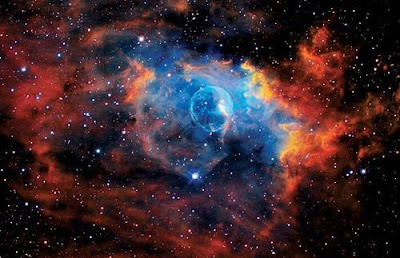 |
| [photo courtesy of smashing-magazine.com] |
In today’s culture, photography is more than simply taking photographs. Families consider it an invaluable medium used to store memories of their children who will grow up too quickly. Journalists use it as a tool to tell stories that words alone can not express. Artists express themselves through photography. All of these uses of photography have been explored in previous posts on this blog. However, there is another important use for photography that is often forgotten.
 |
| [photo courtesy of NASA] |
Scientists use photography to study places that they are unable to visit. This technique is especially prevalent in areas that space missions cannot reach due to the immense distance from Earth. Where NASA cannot send people, it sends cameras. While a photograph of a rebellion in Libya provides a reader with an idea of the tension within the country, a photograph of a galaxy provides an astronomer with a map of planets that could not otherwise be studied.
 |
| [photo courtesy of NASA] |
For example, NASA sent the Mars Rover in hopes of finding life on the Red Planet. With no way to send astronauts to the surface, sending a rover equipped with a high-quality camera was the only way for scientists to determine if there was life on Mars. After studying the immense amount of photographs from three successful missions, scientists can rest assured that there is no risk of the Looney Toons “Martian” invading the planet.
 |
| [photo courtesy of NASA] |
Without this unique use of photography, astronomers would be left wondering if life on Mars was even possible. Due to the successful implementation of technology and photography, new scientific leaps allow scientists to have an increased understanding of surrounding planets. However, photography is not only used to determine the possibility of life, it is also used to determine the existence of planets.
 |
| [photo courtesy of NASA] |
The Milky Way galaxy is home to thousands of planets, stars and other astronomic bodies. In order to discover the existence of new planets, astronomers launch satellites equipped with high-speed, high-quality cameras to take pictures at millisecond intervals. After receiving the data, scientists study the changes from each photograph. If they begin to notice that a body has moved over a series of photographs, they can declare the body a “dwarf planet.” This method is used to determine the difference between stars and planets.
 |
| [photo courtesy of NASA] |
Examining scientific uses for photography makes it evident that photography is not just a hobby that mothers can use to scrapbook their children’s lives or an art form that is used by starving artists to let their passions and beliefs out in a visual manner. Rather, photography is a critical part of our lives that allows an increased understanding of the world around us-- whether it is a picture of an Egyptian rebellion or the first photograph proving the existence of a new planet.



















Wow! I don't pretend to understand how that dwarf planet thing works, but it's interesting. Thanks.